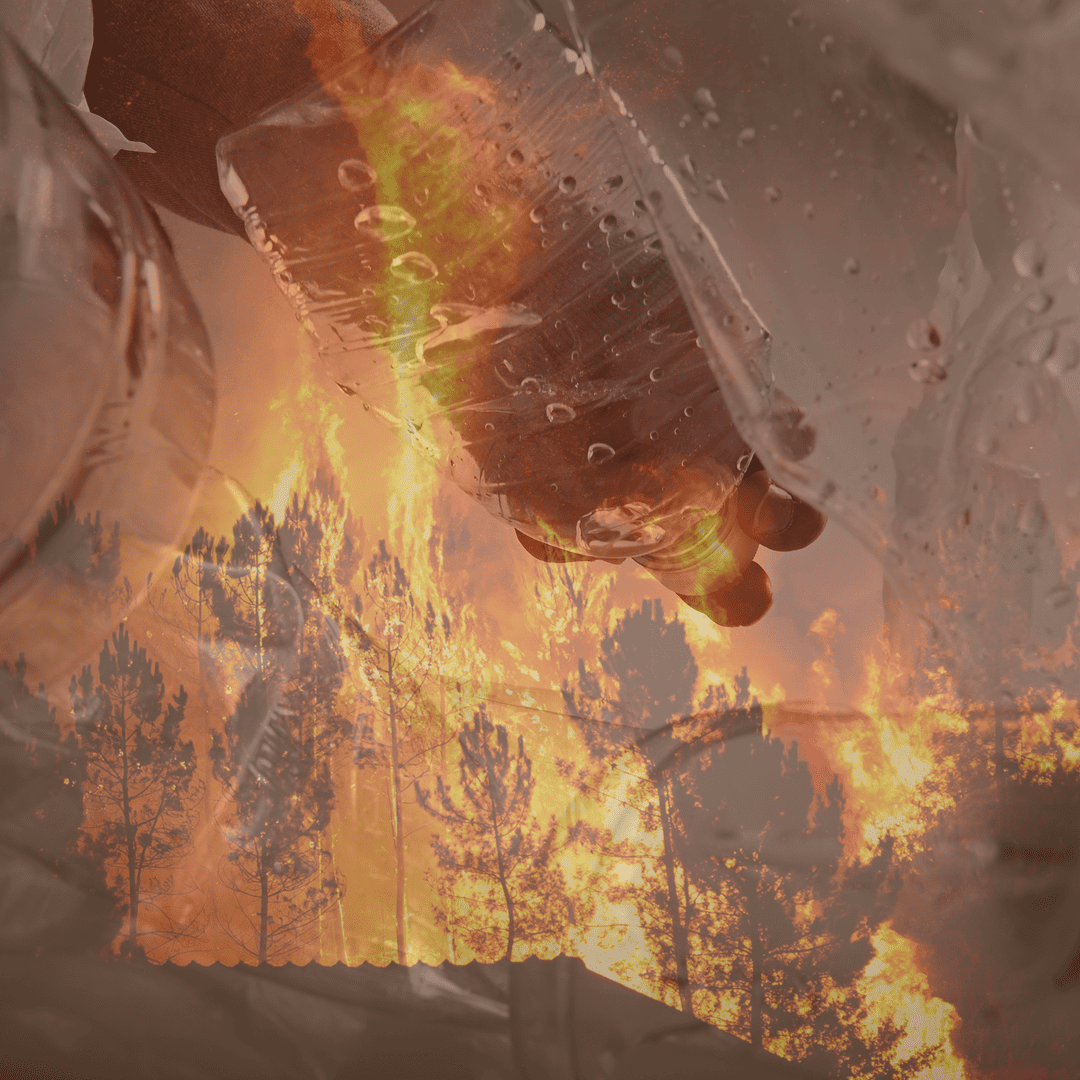Spring: A Season of New Beginnings, Yet a Time We Risk Losing Our Green Spaces

Think of spring: the warmth of the sun on your skin, the vibrant colors of blooming flowers. It's a time of renewal, right? But alongside this beauty, a worrying trend emerges every year: wildfires. Why is it that this season of growth so often brings news of devastating fires? Let's dig in.
Spring's Double-Edged Sword: Warmer Days and Thirsty Landscapes
Spring might paint a picture of freshness and life, but beneath the surface, our forests and fields can be vulnerable. As temperatures climb and the days get longer, rainfall often decreases, and the air loses its moisture. The dry leaves and grasses left over from winter become tinder just waiting for a spark under the strengthening spring sun. When the air humidity dips below 40% and strong winds start to blow, it's a recipe for disaster – even a tiny flicker can explode into a raging wildfire.
Climate Change: Fueling the Flames of More Frequent and Intense Wildfires
With rising global temperatures, winters are becoming shorter, and spring arrives earlier each year. This means longer stretches of dry conditions, significantly increasing the risk of wildfires. Add to that the droughts and powerful winds, both amplified by climate change, and you have a situation where wildfires can spread with terrifying speed and intensity.
The Human Factor: A Small Slip, a Huge Consequence
In these dangerous conditions, it's sobering to realize that even a moment of carelessness can lead to widespread destruction. Something as simple as burning off dry grass, flicking a cigarette butt, leaving a campfire unattended, or even just discarding a clear plastic bottle can become the ignition point for a wildfire that tears through our landscapes.
A World Ablaze: Remembering Some of History's Worst Wildfires

In January 2025, a massive wildfire ripped through Los Angeles, USA, consuming approximately 40,000 acres – that's an area roughly the size of a small city! Driven by fierce winds and parched conditions, the fire spread relentlessly, forcing families to flee their homes and leaving a trail of devastation across natural habitats and properties. This wasn't just bad luck; it was a stark reminder of how abnormal heat and a lack of rainfall, both linked to climate change, can fuel such disasters.
Then, just two months later, in March 2025, South Korea faced its most significant wildfire in recorded history. Starting in Uiseong, North Gyeongsang Province, the firestorm quickly spread across the nation, with over 20 separate fires erupting simultaneously. The damage was staggering: over 38,000 hectares of forest were lost – an area equivalent to almost 80% of the entire city of Seoul. Hundreds of buildings and countless vehicles were damaged, and even the cherished UNESCO World Heritage site of Hahoe Village was under threat. This wasn't just a natural event; it was a profound catastrophe that impacted lives, homes, and irreplaceable cultural heritage.
Experts are sounding the alarm bells loud and clear. The high temperatures, dry air, and strong winds intensified by climate change are creating a world where wildfires are becoming more frequent, more intense, and lasting longer. These aren't just natural occurrences we can shrug off; they are a powerful wake-up call, showing us how climate change is already deeply affecting our everyday lives. The time for collective action is now – governments and individuals alike need to work together to manage our forests responsibly and embrace eco-friendly lifestyles to prevent these devastating disasters from becoming the norm.
The Unsung Heroes: How Forests Fight Back Against Fire

In this era defined by climate crisis and the ever-present threat of wildfires, our forests are so much more than just beautiful scenery. They are vital players in regulating our climate and acting as a crucial line of defense against disaster.
Healthy forests act as natural firebreaks
When forests have fewer dry, flammable materials like fallen branches and dead trees, they can naturally slow down the spread of fire. The moist soil and living vegetation within them act as a natural barrier.
Biodiversity means faster recovery
Forests with a rich mix of different trees, plants, and animals are more resilient and have a greater ability to bounce back quickly after a fire.
Forests cool the planet, and a cooler planet means fewer fires
Trees absorb carbon dioxide and release moisture into the air, which helps to lower temperatures and increase humidity – directly counteracting the conditions that make wildfires more likely.
Well-cared-for forests are our strongest defense
Simple actions like regular pruning to remove dry undergrowth, creating firebreaks, and maintaining forest trails are practical and highly effective ways to limit how wildfires can spread.
Your single tree has the power to grow into a fire-fighting force
That one tree you plant on Arbor Day might seem small, but in 10 to 20 years, it can become part of a larger forest that helps protect against fire. Your small action today has the potential to safeguard lives tomorrow.
🌿 The choices you make in your daily life have a ripple effect, shaping our climate and playing a role in preventing wildfires.
The Unexpected Link: Are Our Disposable Plastics Contributing to Wildfires?

Plastic and wildfires might seem like two separate issues, but there's a surprising and concerning connection between our reliance on single-use plastics and the increasing risk of wildfires.
Plastics are accelerating climate change
The processes of producing and disposing of plastics release significant amounts of greenhouse gases into the atmosphere. These gases are the primary drivers of climate change, which, as we've seen, directly increases the likelihood and intensity of wildfires.
📈 More plastic → More emissions → Climate change → More fires
Discarded plastics can become fire starters
Think about it – clear plastic bottles or bags left behind on hiking trails or at campsites can act like a magnifying glass, focusing the sun's rays and igniting dry leaves or grass.
Plastic waste fuels the flames
When wildfires do occur, any plastic trash in their path actually helps the fire spread more rapidly and releases toxic gases into the air, causing even greater damage to both the environment and human health.
Choosing to reduce plastic helps protect our forests
By opting for reusable, eco-friendly alternatives to single-use plastics, we can help to stabilize the climate and directly contribute to preventing fires. It's a sustainable choice that goes far beyond just the act of recycling.
Take Action Today with Slow Recipe
Ready to make a difference? Start your journey towards a greener, more sustainable life today with Slow Recipe. We believe in the power of simple, daily changes to protect our precious environment.
🌿Everyday Tableware You’ll Love: Slow Recipe's Solution
At Slow Recipe, we offer beautiful and practical alternatives to disposable plastic tableware. Imagine replacing those single-use items with sustainable and aesthetically pleasing pieces that bring joy to your everyday meals. By making this switch, you're not only protecting the environment but also creating a more cozy and personalized dining experience for yourself.
Stay tuned for our next post, where we'll be highlighting one of our favorite eco-friendly tableware brands: Momur Weekend! 🥣
♻️ Remember, even the smallest changes can add up to make a big difference.
wildfires, wildfires, wildfires, wildfires, wildfires, wildfires, wildfires, wildfires







